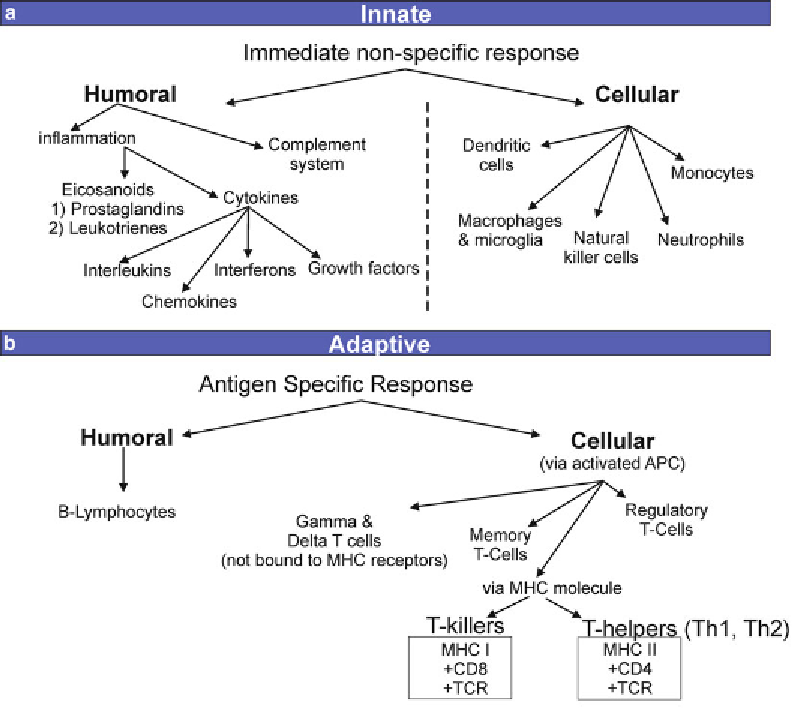Biology Reference
In-Depth Information
Fig. 1. The immune system activation following intracerebral hemorrhage. (
a
)
Activation of innate immune system mecha-
nisms
Extravasated erythrocytes and extracellular serine proteases (thrombin, tissue plasminogen activator, cathepsins)
immediately activate an antigen presenting cell (APC,
macroglia-macrophage
cell line and
dendritic
cells). As the major
source of
cytokines and chemokines
, APC induce chemotaxis and trigger
infl ammation
by activation of cell signaling cas-
cades. Leukocytes (polymorphonuclear
neutrophils
and T-lymphocytes), attracted by
leukotrienes
,
interleukins
, and lym-
phokines, infi ltrate the brain through a disrupted brain-blood barrier (BBB) and promote early brain injury while stimulating
macrophages to release pro-infl ammatory mediators including reactive oxygen species (ROS) and secretion of pro-
infl ammatory proteases. The activated
complement system
components mediate erythrocyte lysis and brain edema forma-
tion. Natural killer cells (NK) produce cytokines and release cytolytic/cell killing molecules and, similar to gamma delta
T-cells, are considered a bridge between innate and adaptive immune systems. Also, the complement system and phago -
cytic activation and release of
growth factors
are important for hematoma clearance and post-hemorrhage brain repair.
(
b
)
Activation of adaptive immune system mechanisms
In experimental ICH T-lymphocyte accumulation occurs 2-3 days
post injury and lasts for at least 28 days. A sub-population of T cells (
T-cytotoxic
or
T-helper
) are activated by signaling
events, when the
T-cell receptor
(
TCR
) and
CD 8
or
CD4
coreceptors bind antigen-specifi c class I or II MHC (MHC-I or MHC-II)
molecules expressed by the target cells.
T-regulatory cells
function in ending the T cell-mediated immunity activation
i.e. immune tolerance. Currently, the role of
gamma delta cells
as well as a
memory T cells
in ICH brain injury is not clear.
via lectin and alternative pathways (
4-6
). Further, adaptive immune
mechanisms and complement system (classical pathway, immuno-
globulin-mediated), triggered by activated antigen-presenting
cells (APC: monocyte-monophage cell lineage and dendritic cells)

Search WWH ::

Custom Search